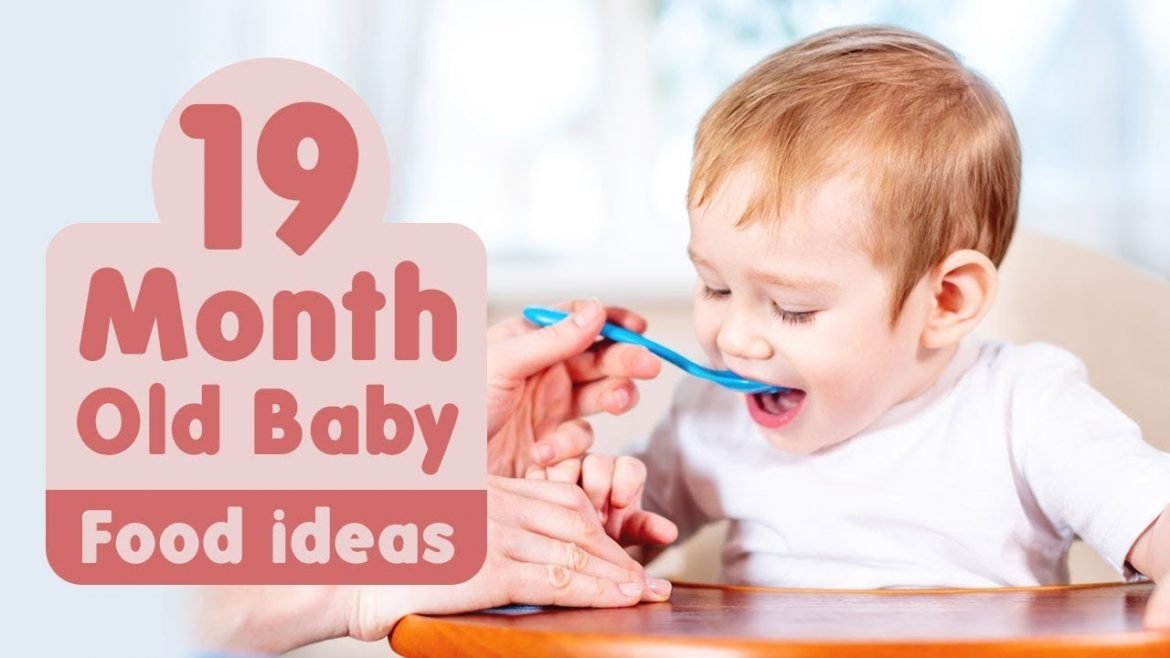Babies at the age of nineteen months continue most of the foods that they are taking since their seventeen months. Menus and recipes stay almost the same as babies are still going through a small yet slow phase of development. The taste preferences and needs remain virtually the same as well. Babies are needy and fussy during their food times as they require what they see, and they mostly copy their adults. It’s alright to introduce foods that you eat too because babies need all kinds of nutrients now to prepare for the third year.
Food importance for babies
Often mothers complain that their babies don’t listen to them at the time of the nineteenth month as they have experienced their independence well by now and wish to do everything according to their own will. They will throw tantrums if mothers say No or give them something they don’t want. It’s quite a hard phase for mothers as they find it difficult to convince their toddlers the right thing due to lack of humor understanding.
While some mothers face neglect from their babies, some of them show it themselves in case of baby feeding. If their baby becomes independent and eats everything at the front, they get careless, thinking their baby is now eating correctly and ignore the main foods. It’s important to remember that no matter how much a baby gets independent, he still needs the main foods that work for his growth and development. Fruits and vegetables should never be left out of your baby’s food routine.
How to make a perfect food chart for your baby?
Usually, babies are used to some great recipes by now as they have started fats and oils since their fifteenth month; several mothers are busy making some cooked vegetables and meat for their babies with combinational foods. Babies get used to salts and other herbs by now and do not show neglect while being fed. But still, we can assure that babies make faces or complain during their veggies’ meals and wish to try what they haven’t eaten yet.
To make sure that you are making a perfect food chart for your baby, you need to keep some essential points in mind. We are here to help you with these points so that you can make your meals satisfyingly from your nineteen-month-baby food chart.
- First, make sure you create all the meals neatly and cleanly. The utensils and shelves where you will prepare the food should be clean as well.
- Always wash your fruits and vegetables before cutting or using them. Rinse them nicely and cut them with clean knives.
- While separating extra ingredients, make sure you use them sooner so that they don’t rot. Also, keep them covered and refrigerated until the next use. Do not use any rotten ingredient for your baby’s meal. If you have pureed foods for the baby, make sure you use them within three days limit.
- Make a list of all the foods that your baby needs according to his month and buy them. After checking your groceries, you can either store them directly after washing or cut them first before saving them to use after a while. The best option is to cut them directly at mealtime for a fresher taste.
- Create a table with all seven days and five meal times each day. Divide your requirements into early morning, breakfast, lunch, and mid-day and dinner categories by sorting light and heavy meals into specific times.
- Make sure you have all the crockery, machinery, and utensils available for your easy access. These accessories include a blender, food processor, food mill/ grinder, potato masher, peeler, etc.
Food options for a healthy food chart
Now it’s time to add some foods that are there regularly but still essential to stay with your baby in his meal times. It’s not necessary to follow the whole list faithfully as there are several other options to choose from for time-saving for some mothers as well. We try our best to provide more accessible and adaptable ways to help you with your concerns.
- Whole grain toast topped with nut butter and sliced bananas
- Oatmeal with milk and frozen berries
- Fluffy spinach scrambled eggs.
- Pasta mixed with white beans and tomato sauce
- Cheesy peasy pasta
- A small sandwich with cooked meat and carrots
- Veggie lasagna
- Breaded baked chicken strips with steamed carrots and a dinner roll
- Stir fry chicken, squash, peas and brown rice
- Sliced apples with a thin spread of nut butter
- Mashed potatoes with boiled peas and carrots
- Sugar-free yogurt smoothies
- Fruit salads and meat bites
What does a baby need in his diet?
Just like adults, babies need a balanced and nutritious diet to keep growing stronger and healthier. If the diet plan lacks nutrition and minerals that our body prefers, we will become sick and lazy. Babies go through a long stage of development until they enter puberty. That’s why it’s essential to keep healthy and natural foods included in their diets from the very beginning. If a mother acks interest in providing the right foods, the baby will never be able to look forward to eating healthy.
Every baby requires lots of vitamins, minerals, iron, potassium, zinc, and carbohydrates to grow correctly. These nutrients not only help him grow but also work through their physical and mental developments that help him understand life better.
To know more, Click here
